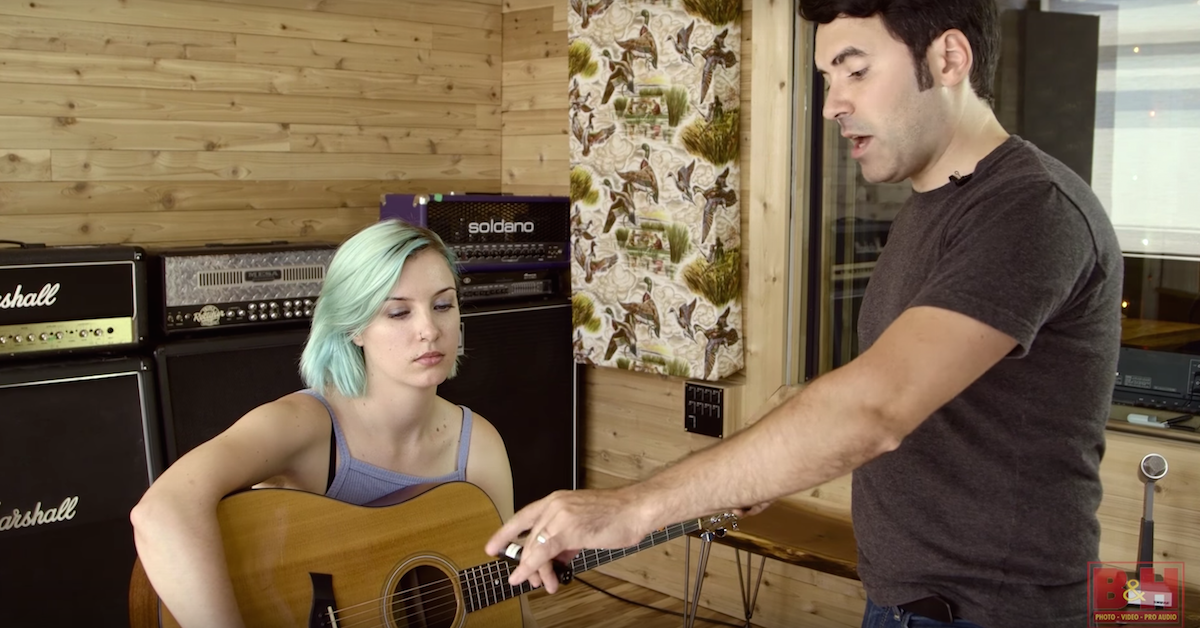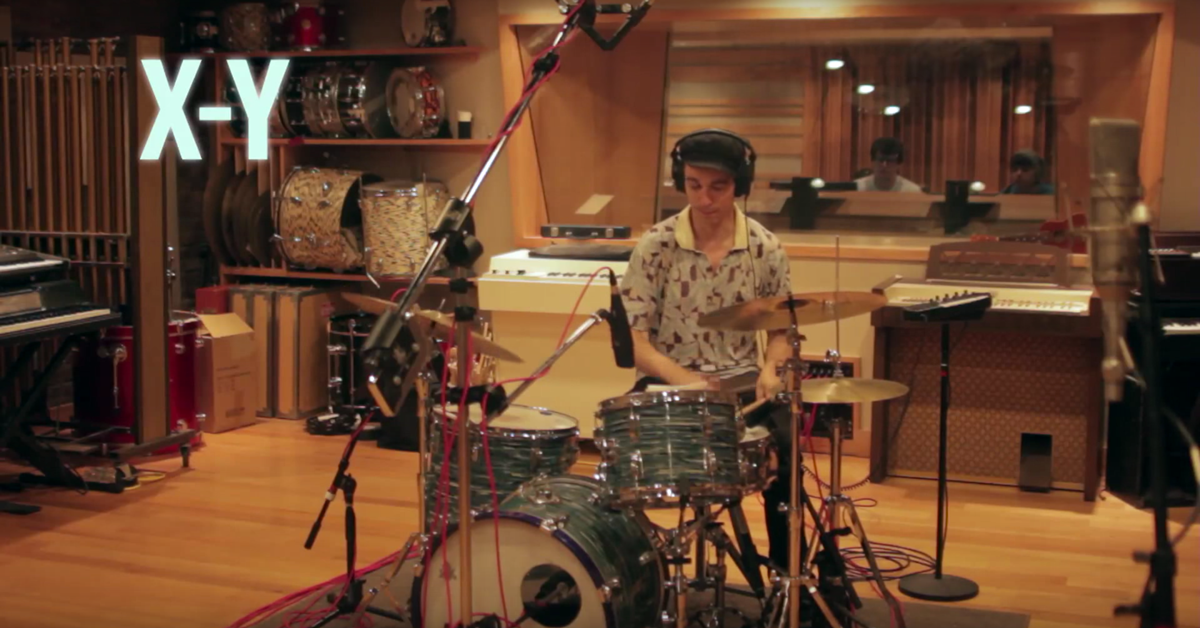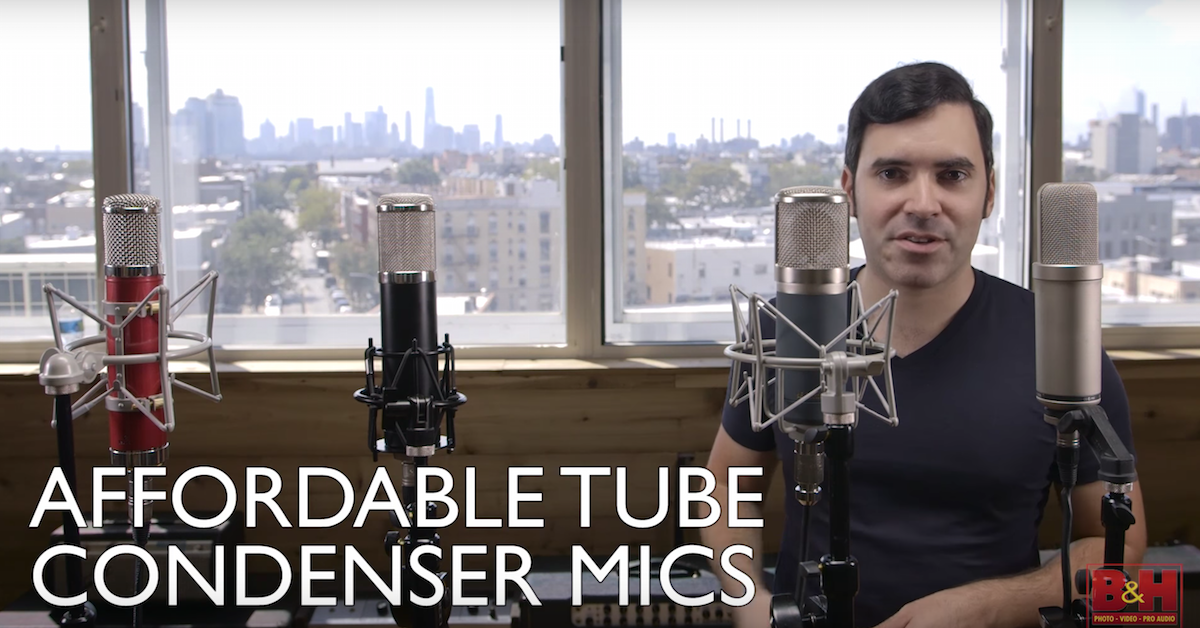Review: N8 Ribbon Microphone from AEA
We’re going to be checking out a stereo pair. These microphones are super fast for transients, but really warm. It’s almost like the best of both worlds between dynamics and condenser microphones. Really great for acoustic guitars and overheads. They’re a real workhorse microphone.
These are priced between $1,100 for just one and about $2,400 for the pair here in the US. So I’m going to be giving you a wide range of examples today so you can really hear for yourself the capability of these microphones, but first, I want to start off with a Blumlein configuration over the drum kit.
[drums, AEA N8 overheads in Blumlein]
One of the key things that I really listen for in a drum overhead microphone is the ability for the drums to come through into the mic. The body of the toms, the body of the kick and the snare. I also listen to the ride cymbal. How quick are those transients? How well will this translate through in a really dense mix?
Here’s just the pair of N8s.
[drums, AEA N8 overheads in Blumlein]
And here’s the pair of N8s with the close drum mics.
[drums, AEA N8s and close mics]
In this example, we’re hearing the Blumlein configuration as a pair of room mics.
[drum room, AEA N8 mics]
In this example, we have the N8 in front of an acoustic guitar. I used one microphone out front, and then another microphone over the shoulder of the acoustic guitarist. The microphones are equidistant from the bridge of the guitar. Both of these mics are hard panned out to each side.
[acoustic guitar with AEA N8s]
One thing I really listen for in acoustic guitar with ribbons is the speed. You can really hear the pick sound coming through. It’s very lifelike, very realistic. In my opinion, this really makes for a nice sound, and really mixable. You can simply make it brighter by thinning out some of its low end.
In this example, we’ll add some vocals to those acoustic guitar tracks.
[vocals with AEA N8]
What you’re hearing is literally two takes. A stereo configuration on one acoustic guitar, and one vocal. All the sounds are raw. There’s no processing.
[acoustic and vocals]
Now, I want to do a quick test with the proximity effect, and so I moved the mic to a couple different positions so you could really hear how the microphone changes with distance.
[vocals, adjusting distance from mic]
In this section, we’re going to hear the N8 on a couple of different positions for electric guitar.
[electric guitar, adjusting position]
Of course I had a spare mic, because of the stereo kit, so I set one up as a room mic. In this test, I’d like to show you how the microphone rejects sound out to the sides.
[electric guitar, room mics, adjusting rotation]
Now, being that these are active ribbon mics, they require phantom power. This new design enables these microphones to be used with many more different types of preamps, so I decided I’d have a test. This test here shows how the mics do with impedance changes. So first, the preamp is set to 600 ohms, then 150 ohms.
[electric guitar, adjusting preamp impedance]
Now my own personal opinion of these mics. Comparing them to the R88, which I’ve had years of experience, they’re a little bit more aggressive in the mid-range. I think dynamically, they’re really close. Maybe a little bit less dynamic than the passive stereo microphone, but overall, they’re really close to that R88, if not dramatically more detailed in the low end.
I did test them on real low impedance down to like, 150 on the preamp, and they really survived well. They had tons of detail, and I think they’re really adaptable, really easy to use microphones around the studio.
So on setup, the SMS bar really does take a few minutes to get right. You want to take your time setting this up, but there is a little bit of give to these mics, which make it easy to pop on that connector that joins the tops of the mics together, but at the same time, it is easy to not have these mics completely aligned. They can be at a slight angle.
The other thing that I really wish that I had for my sessions is just some sort of big cover. There’s really no way to cover up the ribbons without taking apart the configuration momentarily, because you have to slip the covers over the tops of the mics. This isn’t a big deal. Something as simple as a pillow case could resolve this.
Now, something that I would probably add to my own stereo kit is some sort of padding at the base of each of the adapters, so when threading microphones on the bar, you’re not having to bottom out all the way to the structure of the bar. At one point during my test, I actually lost the small black ring. It took me a moment to find it. It’s black, it hides in the shadows. It is a great feature, being able to take two separate microphones, put them together as a single Blumlein configuration, but it is something that can be easily misplaced. If this were my kit, I’d probably just paint it bright orange.
Now, the case that the stereo kit came in was incredible. SKB, waterproof, you name it. This case can handle it. It was just good knowing that these mics were safe when they were in storage or during transport.
Overall, I really liked the system. Just a few minor things like adding some rubber padding to the frame and to the adapters, finding a larger bag to protect the configuration from wind when not in use, or before and after sessions. You know, those are just minor things, and really, I enjoy the fact that you don’t have to stick with both mics all the time being together. It’s a really flexible system.
Now, if you’d like to see more tutorials and reviews, you can be checking out creativesoundlab.tv and sonicscoop.com. Also, if you have any questions on the AEA ribbon mic, the N8, you can check out ribbonmics.com.






